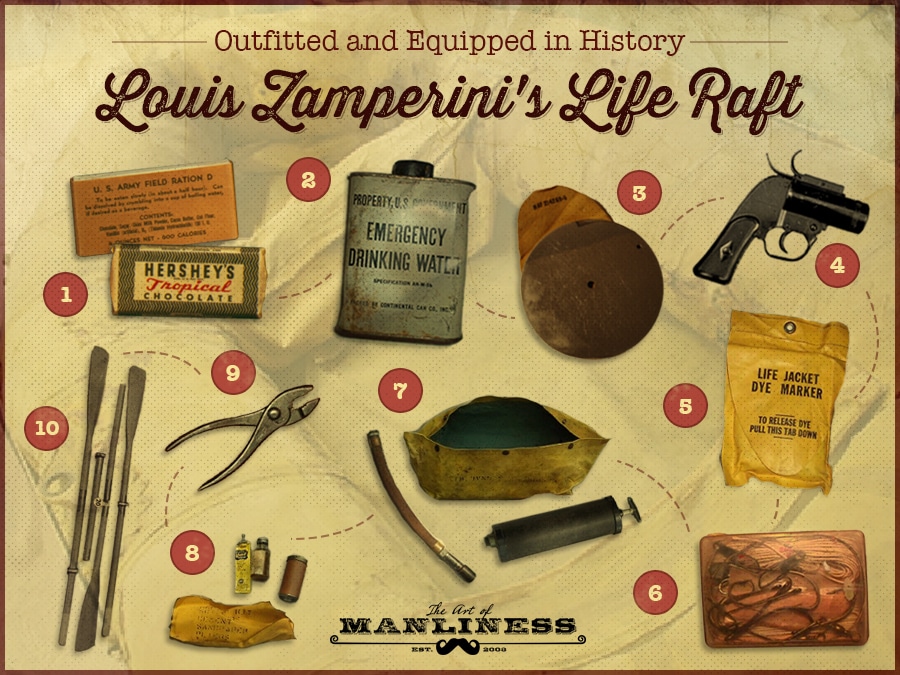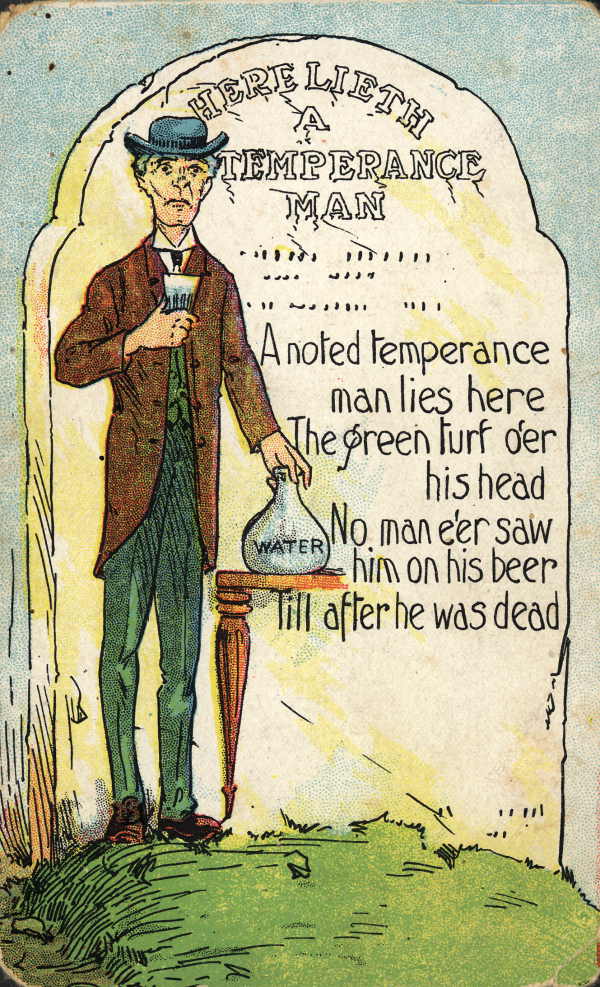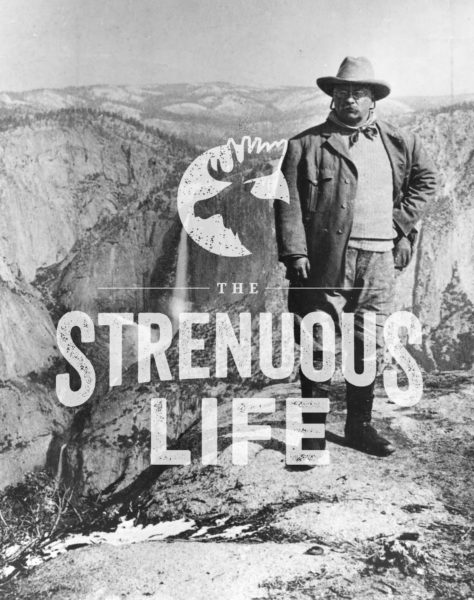
The other day I was flipping through an old issue of Outside Magazine while waiting for a dentist appointment and saw this headline: “The Clown Shoe That’s Changing Minimalist Running.” The 2013 article was about a running shoe company called Hoka, which makes super beefy, super cushioned, moon boot-esque running shoes. The idea behind the shoe is that the body runs best and recovers better when its feet are wrapped in soft pillows that float over the terrain.
I had to laugh to see that the pendulum on yet another compelling narrative had already started swinging back the other way.
Because of course in the years previous to the piece, minimalist shoes and barefoot running had been all the rage. The minimalist movement ascended on the back of an irresistible story: once upon a time, man ran through deserts and savannas with little to nothing on his feet, and did so without all the injuries that cripple modern day runners shod in artificial, gait-damaging shoes. All one had to do was rip off the padded, pronated shackles of modern footwear and frolic like a gazelle into the sunset.
Of course, things didn’t quite work out that way. Folks found they didn’t like the feeling of their feet slapping so hard on the pavement, and that despite their attempts to harness their inner persistence hunter, got injured anyway. Minimalist running enthusiasts will say this is because these eager adopters rushed into the whole thing too quickly, and didn’t take the time to learn the form necessary to make barefoot running a success.
They’re partly right, but such a story is actually just another iteration of the bigger problem: the desire to explain things with simple stories.
The Narrative Fallacy
Psychologists have found that the human brain is primed for narrative. We find messages that are framed as stories more memorable, easy to understand, and convincing. And we all fit our own memories and identity into a neat storyline as well — we tell ourselves that this led to this; this was a big turning point; this had to happen so this other thing could happen.
As we’ve discussed several times on the site, our penchant for narrative can be a positive thing when we apply it to framing our own lives. While it’s possible to fall into the trap of arranging one’s memories of an event in order to shirk responsibility for the parts where we messed up, overall it’s psychologically healthy and beneficial to imagine yourself as the author of your life story — as a hero on a journey.
But when it comes to the messages we receive from others, our brain’s inclination to fit things into a neat storyline can lead us astray and into drawing conclusions unsupported by facts, following unscrupulous leaders, and opening our wallets to those selling a bill of goods.
In The Black Swan, philosopher Nassim Taleb calls this the narrative fallacy — a “vulnerability to overinterpretation and our predilection for compact stories over raw truths.” This cognitive blind spot, he argues, “severely distorts our mental representation of the world.”
The narrative fallacy leads us to draw overly simple conclusions, see patterns where none exist, and organize disparate facts into an all-uniting explanation when the real causes are actually more complex and random. This skews our view of information, which can diminish our ability to think critically and make good decisions.
Why Are Narratives So Compelling?
If stories aren’t always wholly accurate, why do our brains so readily latch onto them?
Narratives make information easier to understand and remember. Taleb points out that information, especially information that seems random and disconnected, is “costly” to obtain, store, manipulate, and retrieve; that is, grappling with information makes our brains work quite hard. And our brain likes to save energy and find shortcuts whenever it can.
Stories allow you to process and retain information much more easily; they activate your emotions, show you a pattern, and/or give you a rule to follow. They make facts “sticky”: easy to pick up, and easy to hold onto. Taleb offers a useful example of how this works:
“To view the potency of narrative, consider the following statement: ‘The king died and the queen died.’ Compare it to ‘The king died, and then the queen died of grief.’ This exercise, presented by the novelist E. M. Forster, shows the distinction between mere succession and a plot. But notice the hitch here: although we added information to the second statement, we effectively reduced the dimension of the total. The second sentence is, in a way, much lighter to carry and easier to remember; we now have one single piece of information in place of two. As we can remember it with less effort, we can also sell it to others, that is, market it better as a packaged idea. This, in a nutshell, is the definition and function of a narrative.”
Narratives make sense of the random/complex/confusing. Stories are also compelling for the way in which they lend us the feeling of having something figured out; they answer our burning “why” questions in a satisfying way. Modern sneakers are causing our running injuries and we’ve gotten away from how we were born to run — that narrative makes visceral, appealing sense. The problem is, our gut can feel like two contradictory notions make the same amount of sense. Wrapping your feet with lots of cushioning to lessen their impact on the ground — well that seems logical too. How we end up choosing one story over another often has less to do with facts or trying out both options for ourselves, and more to do with which narrative fits best with how we like to see ourselves…
Narratives bolster our sense of identity. To create a sense of who we are, we often frame our past experiences and memories as a story. But we also craft our identities by incorporating externally created stories into our own. This is in fact the central mechanism by which consumerism functions. Branding is nothing more than storytelling; consumers will pick a product that surrounds itself with a resonate narrative. Part of the reason minimal shoes caught on like they did, was that the story behind them spoke to something that many of us want to believe about ourselves: “I’m a wild man. I buck the norm. I don’t let modern culture squash my primal leanings. This shoe will help me live more naturally.” Choosing certain products — and therefore choosing their brand and story — helps affirm the way we like to see ourselves.
The narrative fallacy doesn’t just influence how we buy commercial products, but how we “shop” for information as well. As we read and watch media, we focus on those things that support our preconceived worldview, while ignoring that which contradicts it. We then take our favorite facts and fit them into a narrative that explains what’s going on…in a way that affirms our own beliefs.
4 Types of Narrative Fallacies to Watch For
In The Black Swan, Taleb focuses on how the narrative fallacy influences how we misinterpret rare events and underestimate the amount of uncertainty in the world. But it’s a cognitive bias that influences how we perceive many things, from culture, to history, to our own identities.
As you take in media messages, advertisements, and even vaunted books and academic treatises, know there are four main types of narratives they may come packaged in, and which you will be tempted to apply yourself as you process the information. It’s important to try to recognize when this is happening, and earmark the issue for further analysis and examination:
The Rise & Fall
Within this storyline, something used to be much better in the past, but has now gone downhill.
This temptation comes up a lot when it comes to culture and history: “Kids today are terrible compared to their forebearers, and everything is going to pot!”
You may be thinking, “Doesn’t the Art of Manliness traffic in this very fallacy?” Because of our vintage aesthetic and focus on history, casual purveyors of the site sometimes come away with the impression that we think everything was better way back when. But as avid amateur historians, few know as well as we do what is and is not true about the nature of life in the past. Some things were indeed better, but some things were much worse; the truth, as usual, in somewhere in-between. We thus seek to leave errors in the past, while advocating for reviving those things where evidence exists the practice was indeed better.
The reason we easily succumb to the rise and fall fallacy is that we are inclined only to focus on details that are most salient to us, while overlooking others. So if you’re a more conservative, traditional guy, information about something like the increasing number of out-of-wedlock births is likely more salient to you, and you thus feel like the world is getting worse. If you’re a more liberal, progressive fellow, facts about things like the opening of civil rights feel more salient, and thus you perceive the world to be getting better and better (which can lead to another fallacy that we’ll discuss next).
For a slightly different reason, the rise and fall narrative fallacy also affects how we view bands, retail and restaurant establishments, media publications, and even our friends. We’ll often employ it when we’re annoyed by something that’s possibly small or isolated in nature, and yet still want to feel our annoyance is justified; we don’t want to feel petty, after all! We therefore create a posthoc justification that lends our annoyance a wider, more encompassing context.
So let’s say you liked a band from their very inception, and then they got big, and you found yourself feeling turned off by their move to the mainstream. Consciously, you don’t want to believe you’d let such a thing impact your opinion of their music. So you say the band’s music has objectively gone downhill — they’re simply not as good as they once were! That may indeed be the case, but it’s also possible you’re letting the narrative fallacy affect your perception.
Or, let’s say you’ve got a friend who’s annoying you. You’re tempted to decide that he’s just not the same guy he used to be. You start concentrating on the annoying things he does, and overlook the qualities you’ve always enjoyed. It’s possible that he has morphed into a total jerk, but it may just be an isolated string of recent incidents that you’re interpreting wrongly and reading too much into. It can be easier to chalk a beef with someone up to a new unalterable pattern, and write the person off altogether, than it is to address what’s actually going on.
One of the funny things about running a blog is that you perennially get to be on the receiving end of gripes born of the narrative fallacy. What’s usually occurred is that the critic has interpreted a coincidental cluster of articles as a pattern, while overlooking all the articles that don’t fit the narrative they think they see emerging. Or, they simply don’t like a single article, but decide to tack on a comment about jumping the shark, to add some meat to their complaint. Luckily, I have an objective metric for being able to assess the accuracy of such criticism: I can look back through our archives and see that the mix of subjects sometimes leans one way or another (due usually to random factors), but remains generally varied; that we consistently oscillate between periods of stellar content, and just pretty good content, and that overall, we get better from year to year. What always helps me keep perspective is remembering that people have been saying we’ve gone downhill since literally 6 months after we started the site six years ago!
The rise and fall narrative is a satisfying one to fall into and dish out, but it’s rarely wholly accurate.
Continual Progress
The fallacy of continual progress is like the flipside of the rise and fall narrative. There is a rise, but no fall — things just keep getting better and better.
The reason this narrative is so compelling is that it make us feel optimistic, good, and special. It’s ego boosting to believe you are the most advanced model in a long line of rejected prototypes. It’s satisfying to favorably compare oneself, and one’s generation, to those that have come before.
It’s also a play for immortality. If past generations had the exact same kinds of feelings, dreams, hopes, etc., that you have, you know you’ll one day end up just as they did: as food for worms. But, if you can cultivate the sense that your predecessors weren’t quite as human as you — were something just a bit other — you subconsciously feel there’s a chance your generation will be the first to escape their fate.
The continual progress fallacy functions just as the rise and fall narrative does: we seize onto certain salient details, and filter out the others. That which fits the storyline, stays in the frame; that which doesn’t, gets cropped out.
Take for example what is accepted as a nearly universal cultural narrative: Western culture has gradually gotten more and more sexually liberated. You start the story with those sex-hating Puritans, move into the laughably prudish Victorians, discuss the repressed post-WWII period, and then celebrate the modern day’s grand opening of sexual freedom.
Only the story is not quite as neat and linear as that.
In his History of Sexuality, philosopher Michel Foucault argues that the idea of the Victorians being wholly repressed about sex is largely a cultural myth; he cites evidence to show that while men and women of the late 19th century did curtail speaking of sex in their formal conversations, many new avenues for scientific and social discourse on sexuality opened up at the same time. Foucault does not argue that sexual discourse was as explicit back then as it is now, simply that the Victorians were not nearly as repressed as the popular story holds.
And then, when one widens the definition of intimacy to include the platonic variety, and is confronted with the far more physical and emotional bonds between same-sex friends of that era, the picture of continual progress gets murkier still. It begins to appear that in some ways, we moderns are the prudish and repressed ones.
Foucault posits that we clutch so tenaciously to the idea of Victorian prudery — and the repression of past ages in general — because it casts us in the role of enlightened liberators and brave rebels who spoke truth to power and confronted the establishment. It bolsters a cultural sense of identity.
Yet the truest narrative is typically one that speaks of cycles. Folks of the Jazz Age were more sexually open; those of the postwar period, less. The cycles of history and culture may be spiraling up, or down, but things rarely move in a straight line.
We’re sure gender roles are becoming obsolete, until they surge back. We’re sure we’ve moved past the quack medical treatments of the past, ‘til it turns out our own were completely wrong. We’re becoming less and less violent, and we’ll never have another world war, until we do.
The problem with the narrative fallacy of continual progress is that in celebrating where we’re doing well, it blinds us to the areas that need improvement.
The One Best Way
Remember when jogging and aerobics were all the rage in the 70s and 80s? Weightlifting was a fringe activity that took place in old school gyms where barbells were pretty much the only equipment.
Then globo gyms packed with Nautilus machines were the next big thing for getting in shape. Dumbbells were cool too, for doing isolation exercises that built a certain part of your body.
Now, barbells are back and machines are the butt of jokes. Lateral dumbbell raises? Stoopid. Long distance running? Stoopid. It’s all about high intensity, “functional” fitness and compound lifts, baby.
Though, it seems even CrossFit is beginning to lose a little of its luster. Too mainstream. Some new, as yet underground movement will ascend in its place. Or maybe everyone will go back to being all about jogging again. It’s pronounced yogging, I think.
The fitness industry is particularly fond of the “one best way” narrative. Its close cousin, the diet world, is as well. Over the last few decades, we’ve gone from celebrating carbs and castigating cholesterol, to elevating fat and carping on carbs.
I tried going low carb once, because I liked the idea — I wanted to eat like my caveman ancestors, just as nature intended. I succeeded, and indeed looked like a skinny tribesman. But I missed my muscle and size, which you need carbs to get, so I went back to eating a balanced diet.
There’s rarely one best way for everyone to do something. There’s sometimes a best way for individuals. But for most, the best method is quite often a middle path. Or any path; the search for the best method of doing things can keep you from getting started at all, and doing something is often better than doing nothing.
So for example, I don’t stick to any one workout myself, and instead cycle through programs like Starting Strength, Atomic Athlete, and Critical Bench. I sometimes even go on a short running jag. And yes, I even do the occasional bicep curl. Because it feels great, bro. The best way to exercise, I have found, is whatever way keeps me motivated and enjoying my workouts.
The Too Simple Explanation
Turn on any nightly news program, and what you get is storytime for adults.
So-and-so lost the election, and this is why. This is what caused the drop in the stock market. Here’s what you should get angry about.
Facts are provided, yes, but they’ve been culled and cropped and made to fit a certain, easily digestible narrative — usually one that matches the platform’s partisan leanings. What is said and what is shown tells one side of the story, but another is left out. Yet the story still makes visceral sense, so it’s satisfying.
Online, web editors know the majority of people won’t read the text of an article, and thus they try to tell the story in the headline alone. Obviously, nuance doesn’t fit into the equation.
If we do read the article, our brain still looks for shortcuts. Carefully processing the information takes work, so we scan for clues as to the author’s intent and message, and categorize and file the piece away in our cranium as quickly as possible.
After thinking about this subject for years, I was actually inspired to finally write it out after seeing some of the reaction to the Stop Hacking Your Life post Kyle Eschenroeder wrote for us a couple weeks ago. Most people really dug it, but a few took umbrage at what they perceived to be a wholly anti-hacking message. This, despite the fact that Kyle had gone out of his way to say that hacking wasn’t necessarily bad, and could be good, as long as you avoided certain pitfalls. What had happened with these folks is that their brains flew past the caveats at the beginning, and latched onto the fact that the main body consisted of hacking’s possible downsides. Seeing this focus, their brains quickly categorized the post as “anti” and shunted it onto that particular cognitive track, out of which flowed their reaction.
We like our media packaged into a simple storyline, and that’s how we like our people too.
When we meet new people, and even interact with those we’ve known awhile, our brains retain their steadfastly economical bent. Humans are multi-dimensional creatures, but processing those dimensions takes time and heavy cognitive lifting. So we reduce the number of dimensions we look at, and focus on just one or two; in other words, we use a certain characteristic as an all-explanatory theory for why they do what they do. Well, they believe that/act that way because they’re black/white/Christian/atheist/American/Canadian/man/woman. Stereotypes sometimes hold true, and sometimes don’t, but they never tell the whole story.
Folks who don’t stick to a neat storyline for their identity — a gay man who’s against same-sex marriage, a vegan MMA fighter, a church-going atheist — confound and sometimes even annoy us. They thwart our brain’s attempt to take a shortcut in processing their identity and force us to work harder to figure them out. We want people to offer a simple story about themselves to us — Are you pro, or anti?! Are you conservative or liberal?! — because that makes the person easier to grapple with, accept/reject, and of course, manipulate.
Since this is the Art of Manliness, I would be remiss not to mention this also applies to historical figures. Rather than dealing with the complexity of famous figures, learning from what they did right without duplicating their errors, many choose the lazy path of describing their lives with a simple story. Crook! Saint! Evil! Hero! (Hypothetically, people might choose to see eminent men of the past either too glowingly or too critically, but in our cynical age, the default answer is always the latter. It feels a lot cooler.)
Conclusion
Although your brain will want to perceive it that way, I’m not anti-narrative.
Seeing things through the lens of narrative can lend our lives meaning and texture. And heuristics are necessary for navigating the world; we can’t reinvent the wheel every time we examine something or make a decision.
It’s simply important not to misuse narratives, to apply them where they don’t fit the facts and don’t accurately interpret what’s going on, and thus lead us down the wrong path.
Narratives are emotionally and cognitively satisfying, but the truth is usually in-between the extremes that make for good stories. I know I actually like the fact that AoM gets criticized both by the more liberal and the more conservative; I feel like when you take heat from both sides, you’re probably getting somewhere!
Brains don’t naturally take to messages that say, “This can be good/bad, but….” and it can be boring to listen to “on the one hand…but on the other hand” discourse. But it’s frequently necessary to arrive at the fullest picture. What is causing what, and how things are connected, is usually more complex than we wish to admit, and sometimes outright random.
This isn’t to say that there aren’t absolutes; I certainly believe in truth with a capital T. This isn’t to say there isn’t a place for jeremiads that emphatically argue for one point of view, either. It’s simply a call to examine both sides of the issue (digest jeremiads on both sides of the aisle!) before you arrive at what you believe to be Truth. Once you do, preach it; it’s then up to others to analyze and evaluate the story you’re sharing.
So look for evidence that contradicts the stories you want to believe — especially those that are particularly compelling. Ask yourself whether you’ve bought into a story simply for the way it bolsters your identity. And experiment to figure out what works for you. Want to know if some hot new workout really is “the one best way”? Try it out.
To return to the running shoe example at last, minimal shoes didn’t work out for everyone, not just because not everyone took the time to learn proper form, but because they’re simply not the best shoe for everyone’s unique build, style, and needs, period.
“I’m a husky runner with an awkward gait who needs extra cushioning, and cannot for the life of me change my running form at this stage in my life” isn’t as cool a story as “I’m a wild tribesman dashing nimbly through the forest.” But it’s a lot truer.







